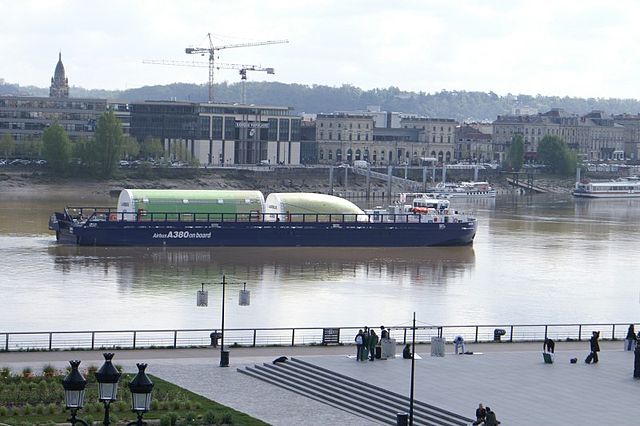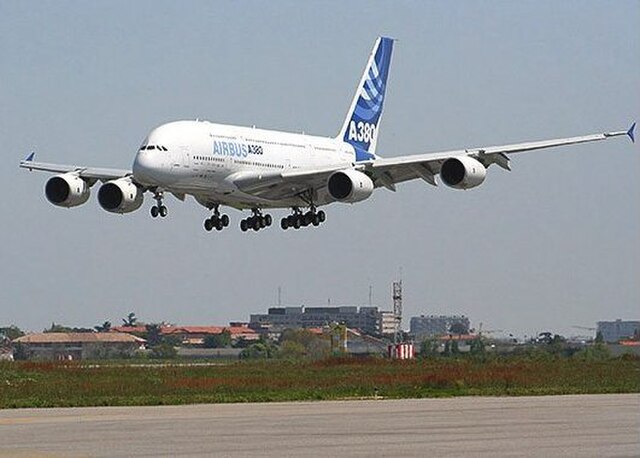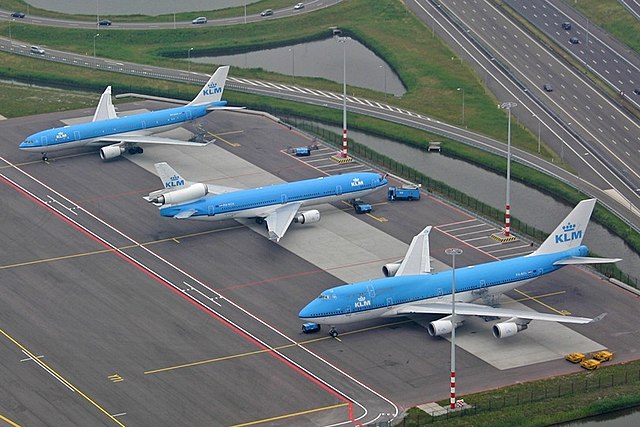The Airbus A380 is a very large wide-body airliner that was developed and produced by Airbus. It is the world's largest passenger airliner and the only full-length double-deck jet airliner. Airbus studies started in 1988, and the project was announced in 1990 to challenge the dominance of the Boeing 747 in the long-haul market. The then-designated A3XX project was presented in 1994; Airbus launched the €9.5–billion ($10.7–billion) A380 programme on 19 December 2000. The first prototype was unveiled in Toulouse on 18 January 2005, with its first flight on 27 April 2005. It then obtained its type certificate from the European Aviation Safety Agency (EASA) and the US Federal Aviation Administration (FAA) on 12 December 2006.
Airbus A380
A380 components on a barge
The first completed A380 at the "A380 Reveal" event in Toulouse, France, 18 January 2005
A380 prototype on its maiden flight
A wide-body aircraft, also known as a twin-aisle aircraft and in the largest cases as a jumbo jet, is an airliner with a fuselage wide enough to accommodate two passenger aisles with seven or more seats abreast. The typical fuselage diameter is 5 to 6 m. In the typical wide-body economy cabin, passengers are seated seven to ten abreast, allowing a total capacity of 200 to 850 passengers. Seven-abreast aircraft typically seat 160 to 260 passengers, eight-abreast 250 to 380, nine- and ten-abreast 350 to 480. The largest wide-body aircraft are over 6 m (20 ft) wide, and can accommodate up to eleven passengers abreast in high-density configurations.
A narrow-body Boeing 737 of Lufthansa in front of a wide-body Boeing 777 of Emirates
A Boeing 747, the first wide-body passenger aircraft, operated by Pan Am, its launch customer
Three widebodies: KLM's Airbus A330 twinjet, McDonnell Douglas MD-11 trijet and Boeing 747-400 quadjet
An Airbus A300's cross-section, showing cargo, passenger, and overhead areas








